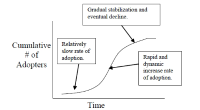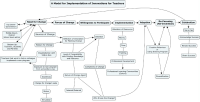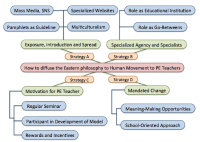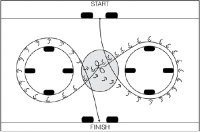The aim of this study was to investigate the relationship between measures of sprinting ability, fatigue index, lower body strength and power output, and aerobic fitness in well-trained, young, elite female soccer players. The descriptive cross-sectional design was applied to 30 well-trained female soccer players (mean ± SD: age 19 ± 4 years, body mass 57.5 ± 6.9 kg, height 167 ± 4 cm) who agreed to participate in the study. Tests of 40 m linear sprint, 7 x 30 m repeated sprint ability with 30 s recovery, sprint with change of direction, multi stage fitness test (MSFT), and vertical jump were conducted on a soccer field. The results showed that squat jump (SJ) had the strongest relationship with 0–20 m start and acceleration phases, while countermovement jump (CMJ) had the strongest relationship with maximal sprinting speed over 20–40 m. Aerobic fitness measures were significantly related to linear sprint over 0–40 m, 20–40 m sprint times, repeated sprint ability (RSA) fastest time, total time, mean time, and sprint with change of direction. Linear sprint over 40 m had a strong relationship with RSA fastest time, RSA mean time, and RSA total time. Finally, a significant relationship was observed between measures of linear sprint and sprint with change of direction. The relationship observed between aerobic capacity and sprinting abilities and the results from the stepwise analysis suggest that separate training strategies are necessary to specifically target and improve performance in these abilities.
An increasing number of studies have explored the relationship between exercise and cognitive function. While the majority of studies have focused on the effects of aerobic exercise, some studies have shifted their attention to other exercise modalities such as resistance exercise and Tai Chi Chuan. The purpose of this brief review is to explore the effects of aerobic exercise, resistance exercise, and Tai Chi Chuan on cognitive function by reviewing previous research on each of those exercise modalities and their relationships to cognition, including the potential mechanisms underlying those relationships. Generally speaking, a positive effect of aerobic training on cognitive function is observed. While the research evidence regarding the effects of resistance exercise and Tai Chi Chuan on cognitive function are only somewhat established, their positive trend indicates that future studies are warranted to investigate them further.
Sprinting is characterized by a transition from propulsion via knee extending musculature during initial acceleration towards ischiocrural musculature thereafter. This may lead to a decrease of correlation of the maximal strength in the back squat and sprinting performance with increasing distance. The aim of this investigation was to show the correlation between maximal dynamic force of the extensor chain of the lower limbs and short distance sprinting performance. Therefore, sprinting performance (0-5, 0-10, 0-15, 0-20, 0-25, 0-30m) and one repetition maximum (1RM) of 51 physical education students were determined. Pearson correlation coefficients were calculated and show significant (p < 0.01) correlations for the relationships with the absolute 1RM (r = -0.661 to -0.792) and the relative 1RM (r = -0.648 to -0.739). However, a decrease in correlation over distance was not found. The results show that the maximal strength of lower extremities’ extensors is a basic requirement in short distance sprinting and should be considered in training.
The purpose of this study was to test a protocol for establishing collective technical and tactical performance goals in elite men’s volleyball. The participants were a professional volleyball team. The period of study was one entire season. A baseline was established in the first half of the season, and the intervention was carried out in the second half of the season. The intervention involved the use of seven collective performance goals for monitoring the team in competitions. The variables studied were: the achievement of the collective performance goals that were established; the game phase; the result of the set; and the players’, coaches’, and psychologist’s perception of the use of the performance goals and the poster. The team slightly increased the number of goals achieved per game in the intervention period. There was a significant reduction in serve errors and a significant increase in block contacts. The intervention increased the players’ engagement with the team, although there were differences in opinion about the effect on the different players. The intervention improved the players' understanding of the match. The effects of the goal-setting and the poster were positively perceived, due to helping the players to understand their needs and the aspects to improve.

The purpose of this study was to examine whether there exists a correlation between changes in off-season power and changes in in-season skating performance among young ice hockey players. Eighteen elite male players (15.8 ± 0.9) completed on-ice and off-ice performance tests on three separate occasions during a season. Forward and backward skating speed, on-ice agility test, 36 m sprint running performance, broad jump and countermovement jump (CMJ) were included. Off-season improvements in 36 m sprint running performance (r = 0.57, P= 0.02) and changes in broad jump (r = -0.48, P= 0.04) where significantly correlated with in-season improvements in forward skating speed. However, off-season changes in 36 m sprint running performance and jump ability were not significantly correlated with in-season improvements in backward skating speed or agility. These results suggest that an off-season training program that includes sprints and horizontal jumping exercises may have a positive effect on hockey players’ linear skating speed.

This study analysed the influence of a 4 week combined weight bearing circuit exercise program in the body composition, physical fitness, and blood profile of an perimenopausal women (aged from 40 ~ 60, N = 29). Significant improvements were found in blood related parameters, fat-related parameters in body compositions and physical fitness parameters (P<0.01). As skeletal muscle mass (SMM) and lean % Dual-energy X-ray absorptiometry (DXA) considered as a standard for muscle mass in this study are used because each standard showed significant differences (P<0.01) and each standard significantly correlated with SMM, weight, time to exhaustion, fat-related parameters such as fa t% DXA, lean % DXA and free fatty acid in pre and post exercise. Blood-related parameters (creatinine, glucose, HDL-cholesterol, and total protein) significantly correlated with changes in each corresponding blood-related parameter after exercise (P=0.000). Exercise contributed to improving muscle mass-related parameters used as biomarkers in this study, which improved the positive changes of healthy indices are indispensable factors for evaluating the effects of exercise. These changes contribute to a virtuous cycle, which accelerates the capacity to perform exercise. It suggests that the weight-bearing circuit exercise can improve the quality of life of perimenopausal women.

This paper was designed to determine the strategies and tactics to engage and train the physical education teachers in the use of an Eastern philosophy to human movement for learning and for the promotion of physical literacy with their students. Five kinds of diffusion-related theories were used to make the strategies and tactics. To do so, four strategies composed of eleven tactics were suggested: the first strategy was exposure, introduction and spread including mass media, pamphlets, specialized web-site, and multiculruralism; the second strategy was to make specialized agency and specialists including role as go-betweens and educational institution; the third strategy was motivation for PE teachers including regular seminar, participant in development of model, and incentives; the last strategy was mandated change including meaning-making opportunities and school-oriented approach. The most important task is to introduce new knowledge, so among the four strategies, the first and second strategies should be first, after then to persuade teachers, the third strategy might be followed. If teacher tend not to want to use the concept of the Eastern philosophy on human movement continuously, despite the attempts by creators to persuade them, the last strategy can be applied.






The purpose of this study was to examine the relationship between specific off-ice variables and skating speed and agility among young ice hockey players. Fifteen male field players between ages 15 and 17 years took part in the study. Skating speed, agility test on ice, sprint, five-jump, squat jumps (SJ) and counter movement jump (CMJ) were included. Moderate to strong correlations were found between all the off-ice variables and skating speed. The strongest correlations were found between skating speed and 36 m sprint (r = 0.81, p < 0.01), and between skating speed and CMJ (r = -0.86, p < 0.01). There was no significant correlation between agility and speed skating, or between agility and sprint. Based on the results, there is reason to believe that an off-ice training program that includes sprint training and jumping exercises will have a positive effect on young hockey players’ skating performance.

Purpose Fear of re-injury has been linked to functional joint instability after an anterior cruciate ligament injury. However, it is still unknown how fear and function are linked sequentially in patients with a knee sprain. Therefore, the purpose of this narrative review article was to provide a comprehensive summary of the interrelationships between neuromuscular control, cognition, and emotion, the neural mechanisms underlying cognitive and emotional regulation processes, and potential emotional regulatory training after knee ligamentous injury. Methods Previous research articles and more relevant research articles through a cited reference emphasizing fear of re-injury, cognition, emotion, neuromuscular control, and anterior cruciate ligament injury searched from PubMed databases were reviewed. Results Higher fear of re-injury in patients after an anterior cruciate ligament (ACL) injury may be associated with diminished neuromuscular control. As negative emotion requires better cognitive neural processing in the several brain’s regions that are also essential for maintaining dynamic joint stability, increased neural demands as a result of higher fear of re-injury can disrupt neuromuscular control and long-term pathological sequalae. Therefore, enhanced neural efficiency in cognitive control networks through executive function training may help ACL patients to regulate high fear of re-injury and dynamic restraint systems to maintain functional joint stability during intense physical activity. Conclusions As negative feelings can interfere with the cognitive processing for neuromuscular control, executive function training may improve affective control and muscle coordination. Understanding the interrelationships that exist between neuromuscular control, cognition and emotion help to not only develop better rehabilitation program, but also improve patient outcomes after an anterior cruciate ligament injury.
Seoi-nage is a representative technique frequently used in judo. Therefore, it is essential to identify how seoi-nage force characteristics change under various conditions. This study aimed to determine the differences in the force characteristics at different performance heights of elite male judo athletes. Twenty elite male judo athletes participated in the study. They were asked to perform seoi-nage at different heights (80 cm and 60 cm) using a rubber band as a practice situation. Data were collected by a force-measurement device with a rubber band connected to the device. The time variables, force value magnitude, force value rate, and force value angle in the vertical/horizontal planes were calculated and compared at 80 cm and 60 cm. There were significant differences in the force magnitude and the force vector vertical angle at 80 cm and 60 cm (p<.05). The force magnitude was greater at 60 cm than at 80 cm height. The force vector vertical angle was greater at 60 cm than at 80 cm height. In conclusion, seoi-nage at 80 cm height requires less force than at 60 cm; hence, judo players should perform the seoi-nage throw placing their center of mass lower than that of an opponent. Practicing seoi-nage repeatedly at 60 cm height under the training conditions is recommended. Seoi-nage at 60 cm height can be considered an effective training method for increasing the ability to handle difficult opponents.